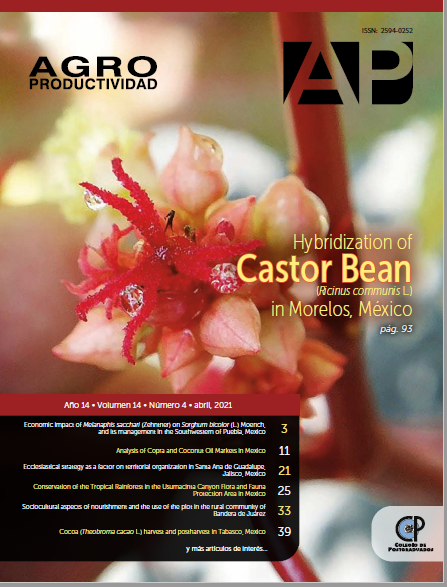Agricultural credit use in papaya agroecosystems in the central region of Veracruz, Mexico
##plugins.themes.bootstrap3.article.main##
Keywords
Carica papaya, farmer credits, production costs, yield, profitability.
Resumen
Objective: To analyze the use of agricultural credit and the profitability of their papaya agroecosystem.
Design/methodology/approach: A survey was applied using a questionnaire to 114 producers in seven municipalities in the central area of Veracruz, Mexico.
Results: 75% of papaya growers do not know about formal sources of credit that support their productive activity. Only 22.8% have used some type of financing, and only 2.6% came from formal credit sources, even though, 97.4% used semi-formal and informal financing options. 77.2 % of growers use their own economic resources for papaya production. This generates a great heterogeneity on production costs and crop management (level of technology) that reflects the final yield. Even under these conditions the crop is profitable.
Limitations of the study/implications: Information from public or private credit institutions, does not reach potential users. The few farmers who have accessed a formal credit, have had bad experiences, such as embargoes and legal actions due to special situations that made them not paying on time, that discourage growers from using this type of credit.
Findings/Conclusions: Lack of knowledge of the growers about financing sources. Low use of agricultural or other formal private credits, as 77.2% of growers used their own economic resources, which generates great heterogeneity in production costs associated with the level of technology, that is reflected in the crop yield, even so the papaya crop still is profitable.

